A tender, floofy vanilla coconut flour cake that comes together with a whisk and bowl in under an hour! Free of gluten, dairy, grains, refined sugar, and nuts. Top it with a double batch of paleo cream cheese frosting for a layer cake worthy of birthdays and other celebrations.
Thanks to Bob's Red Mill for sponsoring this post! All opinions are my own.
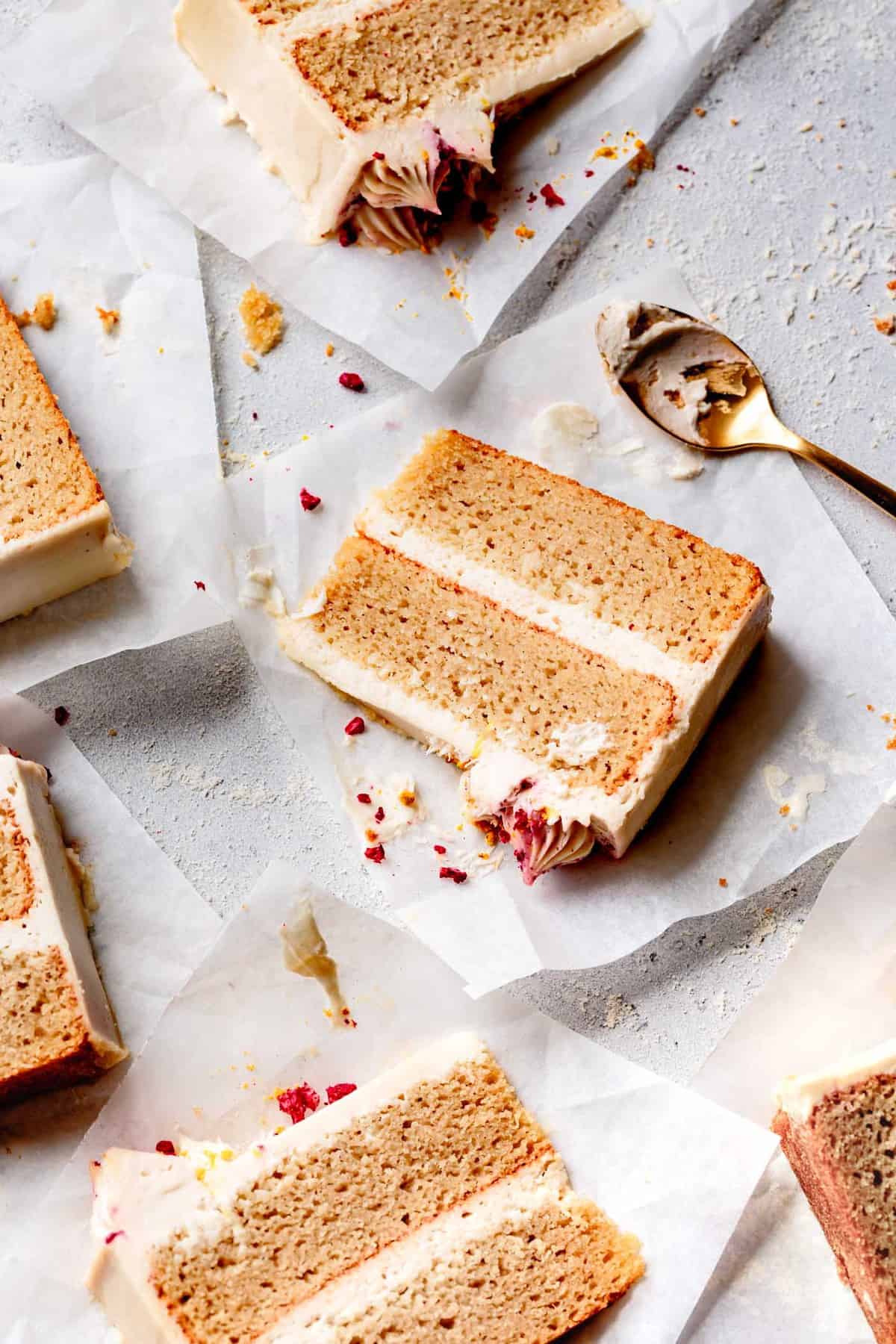
After I posted a recipe for a coconut flour lemon cake last year, a few readers asked if they could make a coconut flour vanilla cake by omitting the lemon zest.
I tested that variation and while it worked beautifully, I wanted to give it a few tweaks to make it taste and feel more like a classic vanilla cake.
Love coconut flour recipes? Chocolate lovers will enjoy this super-moist coconut flour chocolate cake, and you can peruse more allergy-friendly GF & DF cakes recipes here.
How I Developed this Coconut Flour Vanilla Cake Recipe
The original coconut lemon cake recipe uses coconut yogurt and lemon juice to add tangy goodness. This accentuates the lemon zest and it makes the crumb extra springy. Acidity seems to increase the sticky power of gluten-free flours. I'm not sure why this is, but I've observed it many times in my 10+ years as an alternative baker!
In any case, when I swapped vanilla extract for the lemon zest, I found that the tanginess overpowered the delicate vanilla flavor. So I dialed down the lemon juice and used coconut milk in place of coconut yogurt. Bonus that coconut milk is shelf-stable and easy to keep on hand!
I was so pleased with the result! In addition to tasting like a classic vanilla birthday cake, the lower acidity helped the cake bake up with an even softer, more tender, pillowy crumb.
But you don't have to take my word for it. Here's what one satisfied baker had to say:
5-Star Reader Review
“Absolutely delicious! The cake is perfection. So moist and fluffy!”
—Nikki
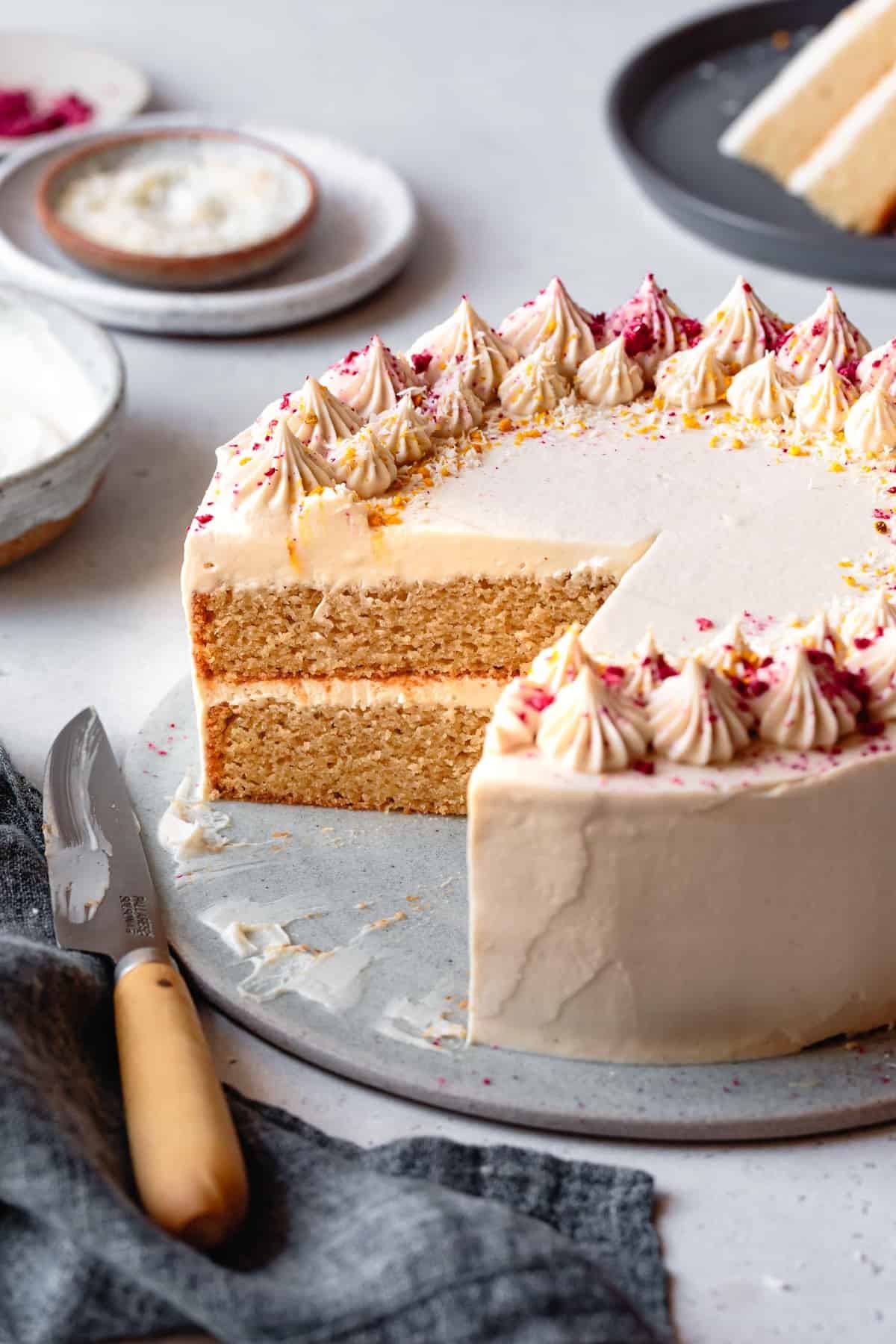
The Easiest Coconut Flour Cake Ever
This coconut flour cake is simple, versatile, and it's free of many common allergens – dairy, eggs, gluten, grains, refined sugar, and nuts. It's super simple to make – just whisk everything together in a single bowl, pour into pans, and bake.
Serve it plain, with a dollop of coconut yogurt and fresh berries for an easy spring dessert. Bake it into a sheet cake or cupcakes for casual parties and potlucks. Or top it with my favorite vegan paleo frosting and build a dreamy grain-free birthday cake for a lucky recipient.
With its fine crumb and rich vanilla flavor, no one will realize how healthy-ish it actually is.
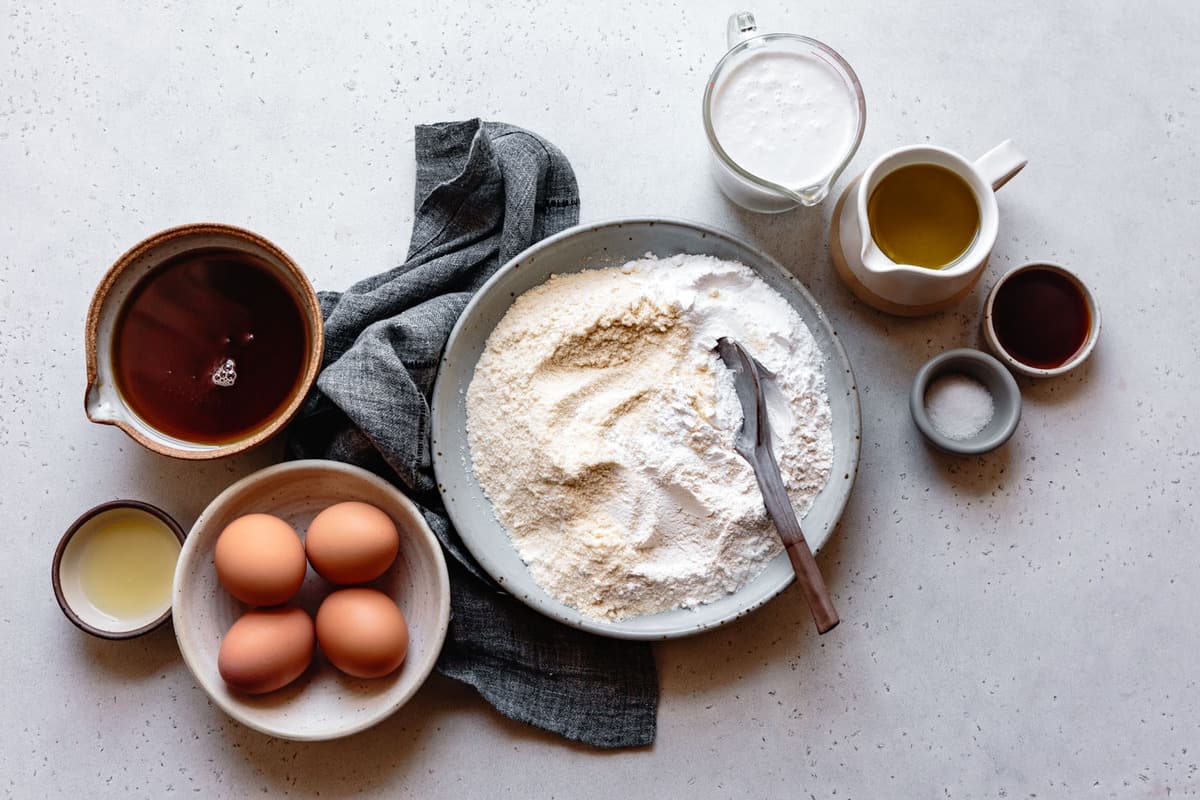
Ingredients and Substitution Suggestions
- Vanilla Extract adds lovely floral flavor to this coconut flour cake recipe, giving it a classic birthday cake vibe. Be sure to use gluten-free vanilla extract if need be.
- Lemon juice adds acidity to the batter, which influences the texture as well.
- Coconut milk moistens and enriches the batter. Be sure to use full-fat coconut milk that has been well-combined. If it's cold in your kitchen and your room-temperature coconut milk is chunky, you can gently warm it in a saucepan over low heat, stirring until it's smooth and well-combined. Let cool to room temperature before proceeding with the recipe.
- Eggs help lift and set the batter. I don't recommend swapping them out if you can help it. But if you're allergic, you could try some combination of applesauce, flax or chia egg, aquafaba, or Just Egg.
- Oil adds moisture while keeping the flavor neutral, and the cake is still soft when chilled unlike with butter-based cakes. I used grapeseed oil here, which is light colored and mild in flavor. Sunflower oil works well too. Other options are avocado oil or mild olive oil. I haven't tested melted coconut oil, but it could work; it will just make the cake firmer when chilled.
- Maple syrup sweetens the cake. Use a light-colored syrup and you won't taste it in the finished cake. Or use a darker maple if you want more maple flavor. The consistency of the maple is important for the texture of the cake, so try not to swap it for another liquid sweetener if you can help it. That said, agave syrup would be the closest in terms of moisture content and sweetness level. Or you could use honey thinned with a little hot water or coconut sugar liquified into a syrup.
- Baking powder and baking soda lift the batter, making it light and airy. Be sure both are fresh and perky for the best lift.
- Salt sharpens the flavors. I use fine sea salt, but kosher salt will also work. Avoid table salt, which can taste harsh.
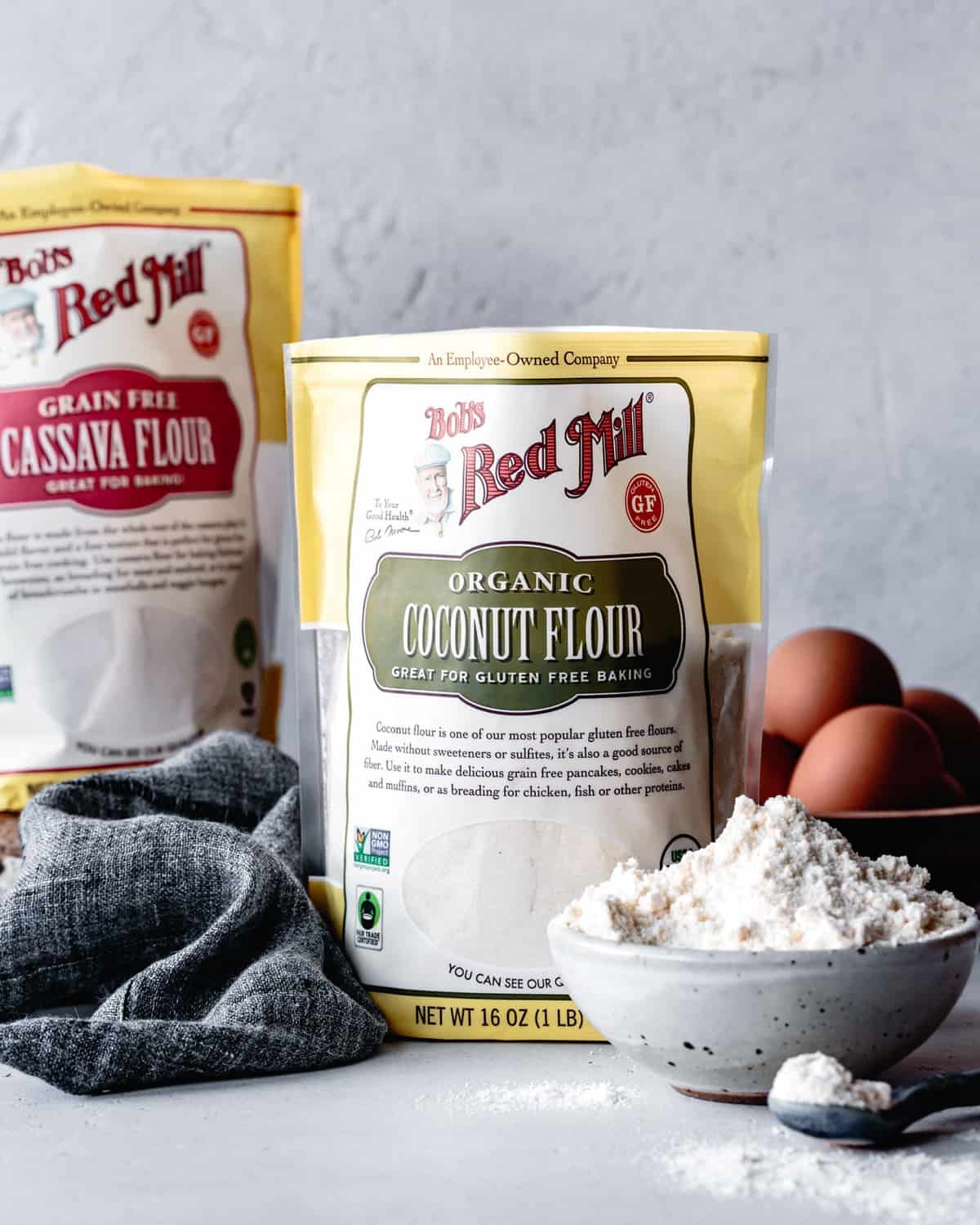
Flours for Gluten-Free Coconut Flour Cake
A trio of flours creates lofty cake layers that no one would ever guess are gluten- and grain-free! I've formulated this recipe to work with these exact flours, so I'd recommend making it as written if you can. But if you must use different flours, I've given my best guess suggestions below.
All flours can be ordered from Bob's Red Mill, or look for them along with other alternative flours at well-stocked grocers.
- Cassava flour gives this cake structure and a springy texture. If grains aren't an issue, try subbing a GF all-purpose blend by weight, such as Bob's Red Mill 1 to 1.
- Organic coconut flour absorbs moisture and fluffs up the batter while keeping the flavor neutral. Coconut flour is far more absorbent than any other flour, so if you swap it out, you'll want to increase the amount of flour by about double. You could try blanched almond flour, which is commonly used in grain-free baking.
- Tapioca flour makes the cake extra fluffy and tender. You could also try using arrowroot flour, which should be interchangeable in baking recipes, though I haven't tested it here.
How to Make Coconut Flour Cake
This low-maintenance cake comes together with just a whisk and a bowl.
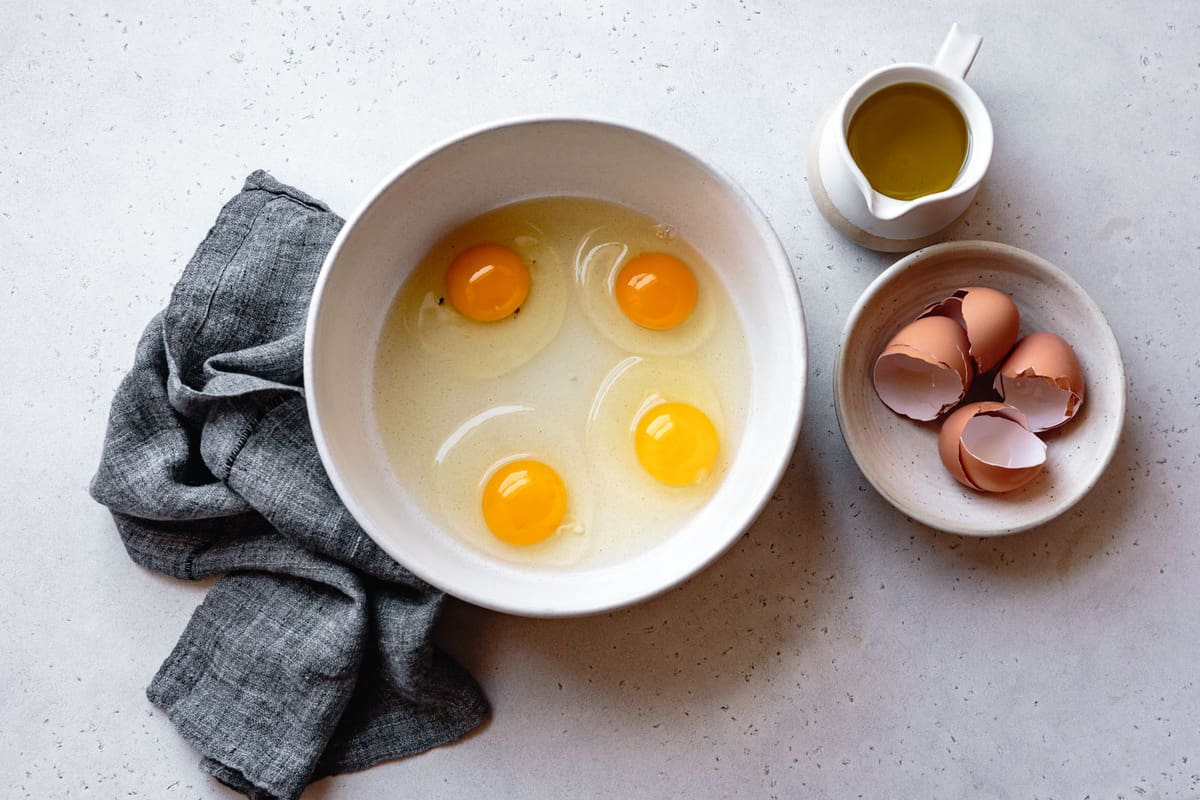
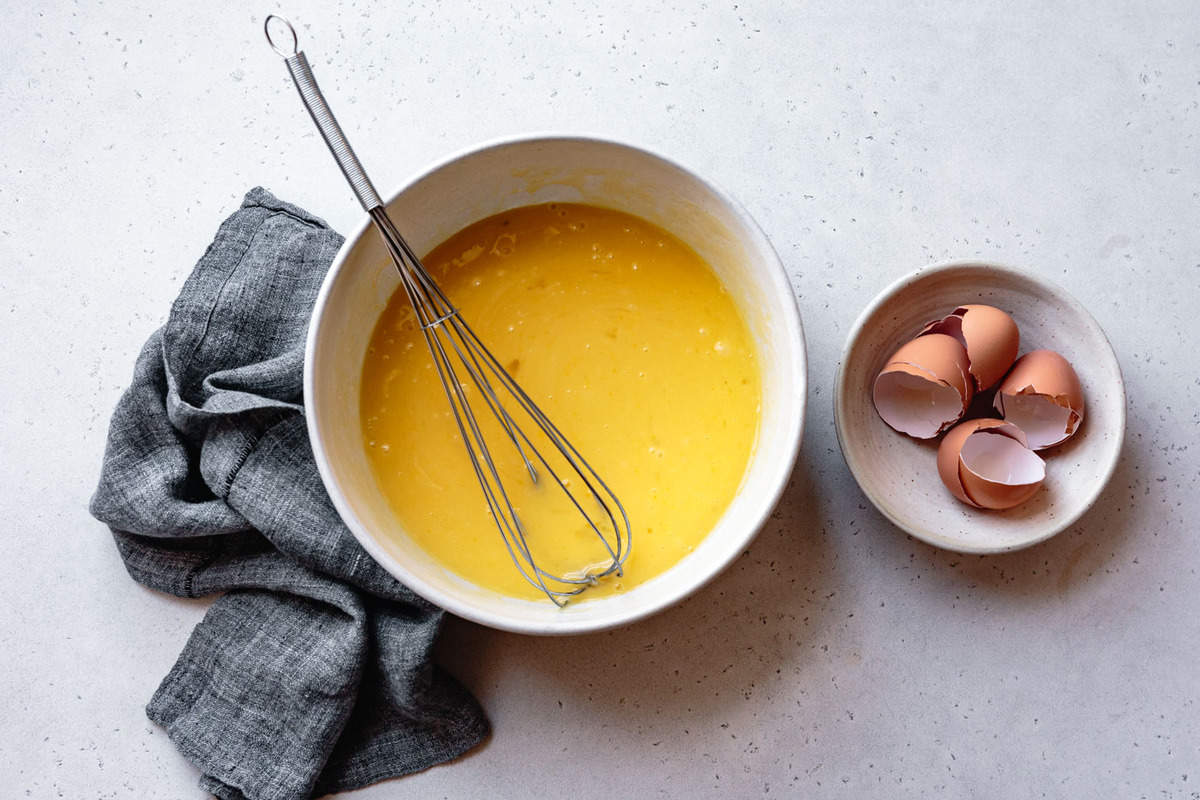
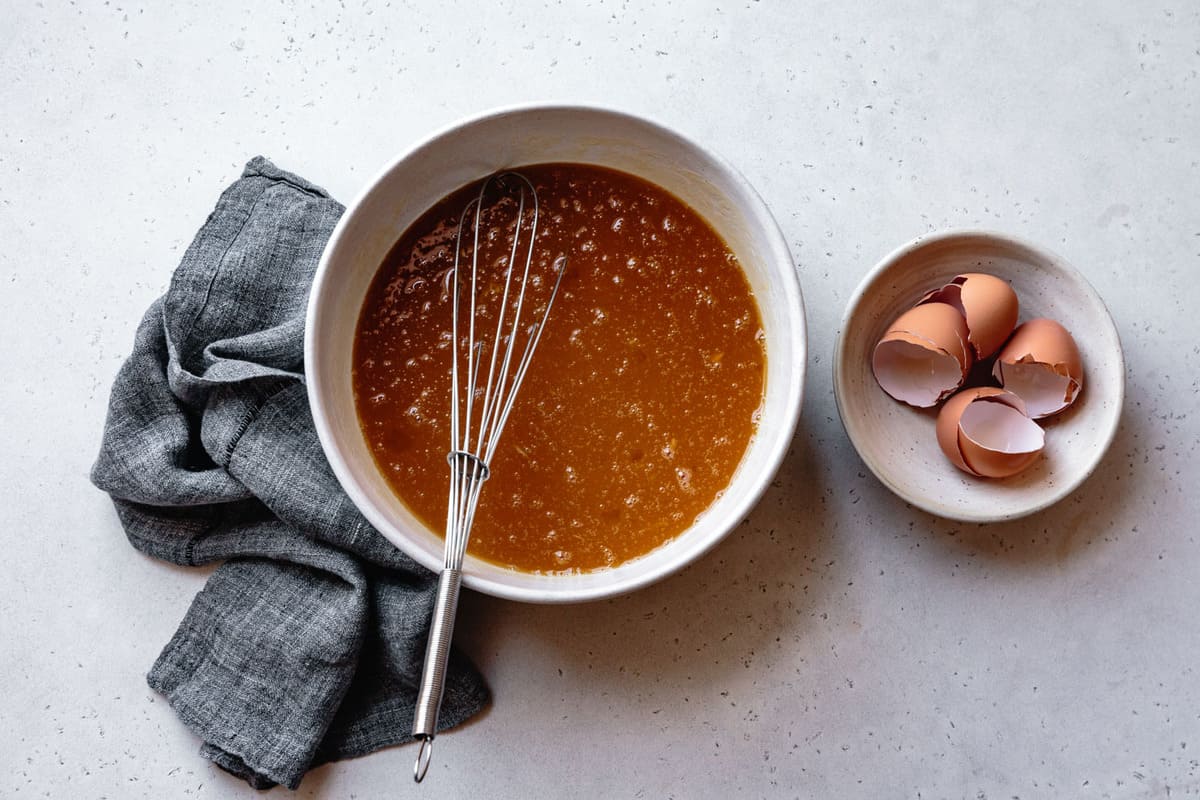
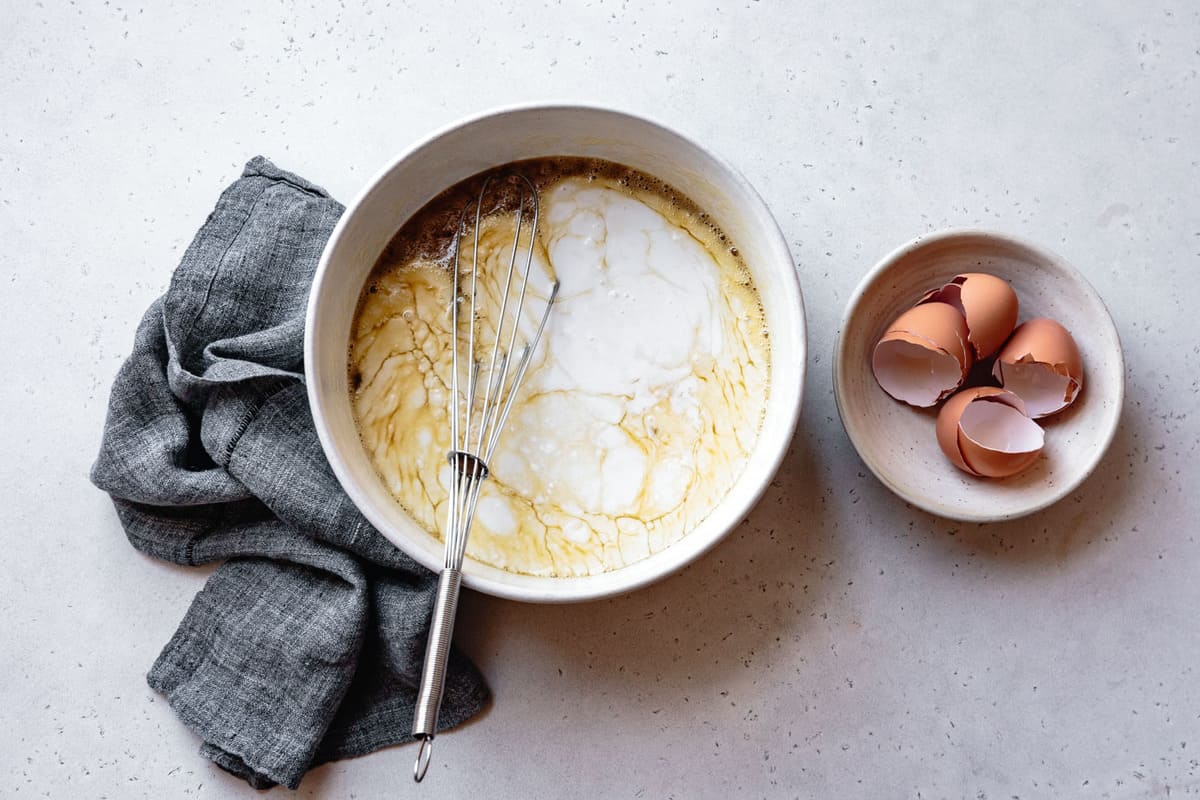
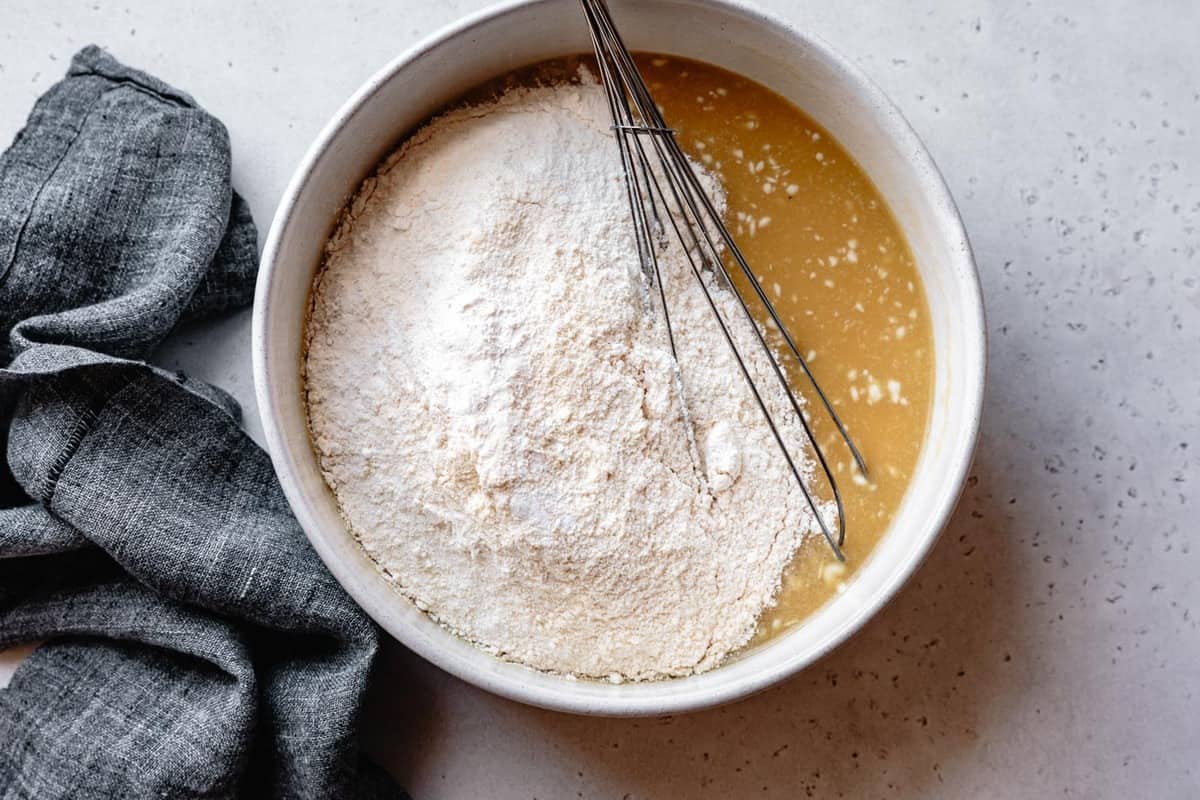
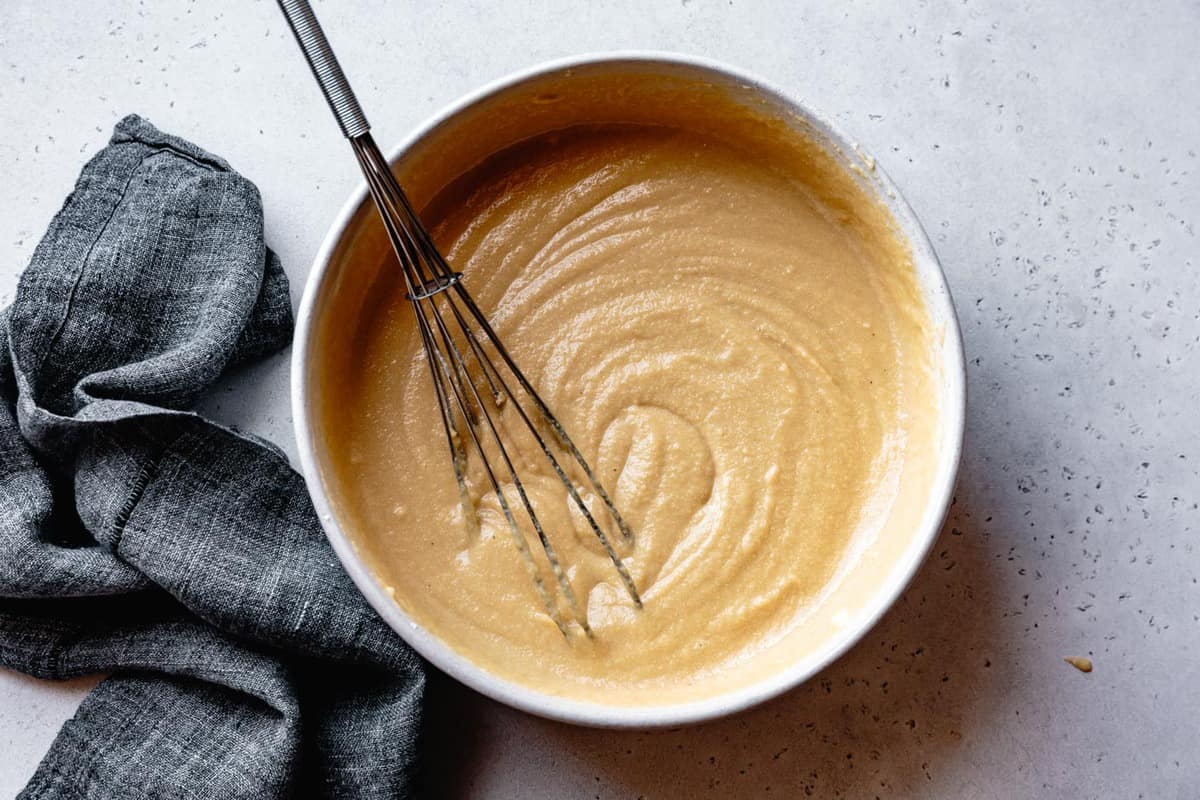
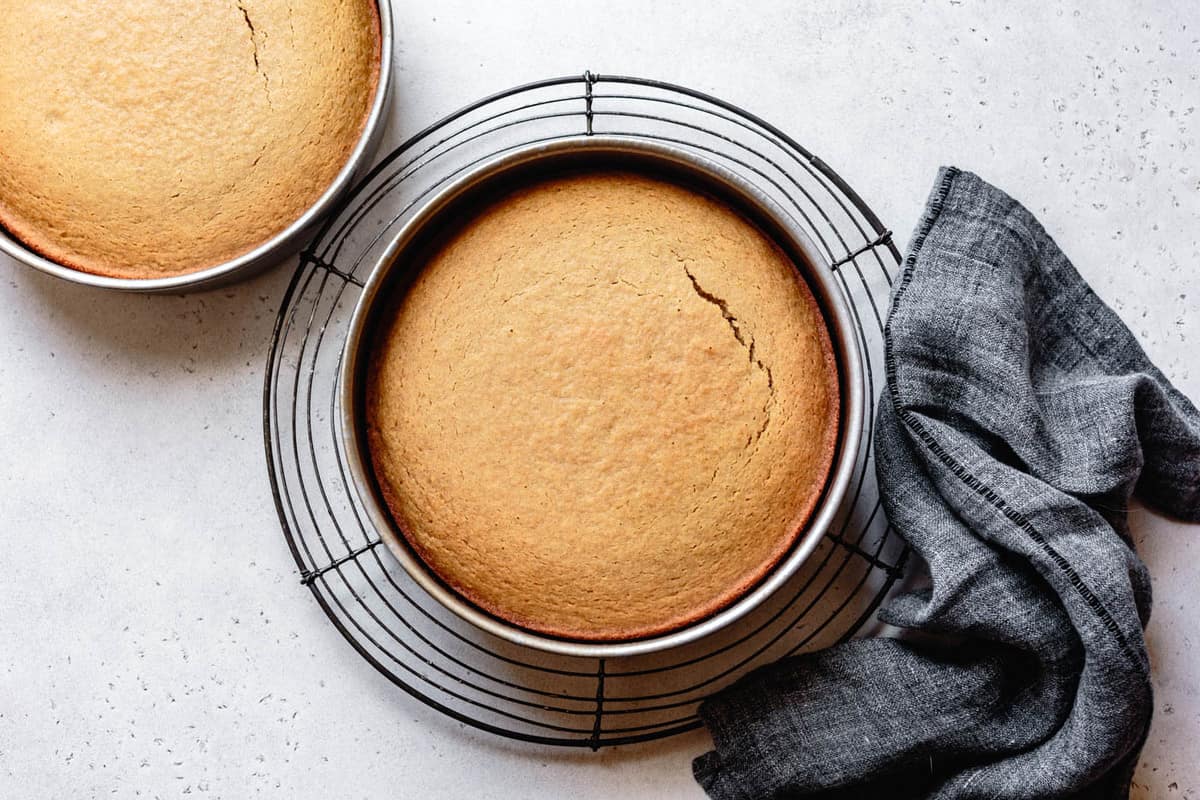
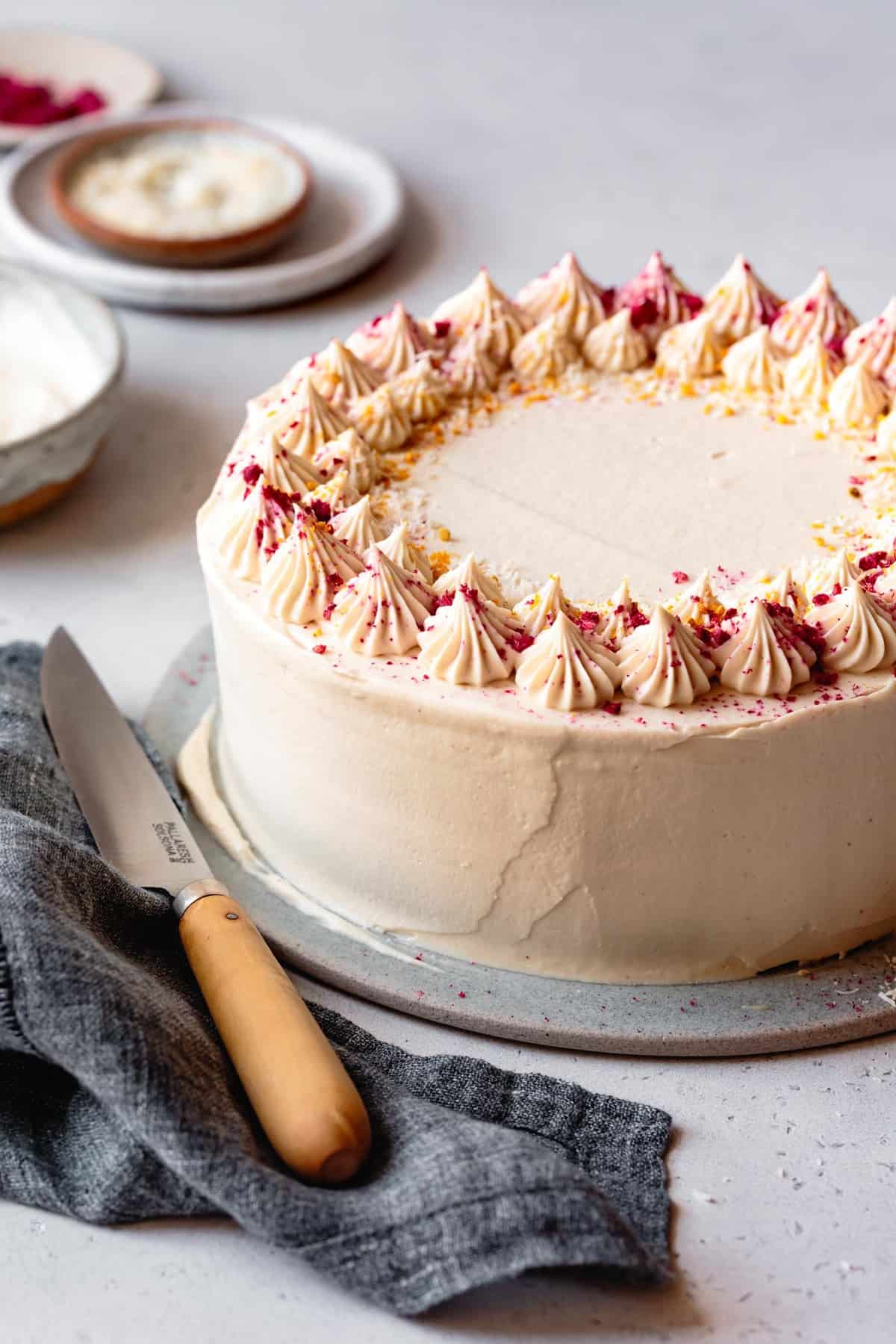
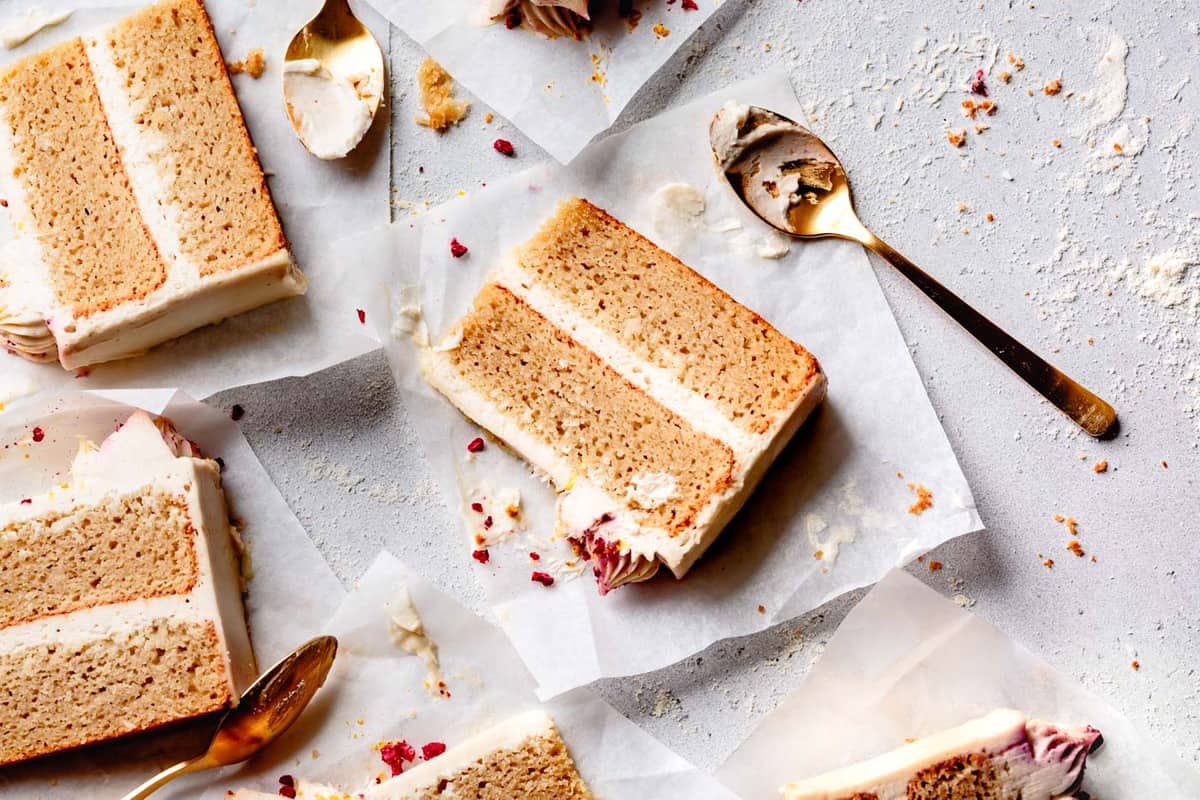
Serving Suggestions
Paleo Birthday Cake
Build a festive coconut layer cake by spreading cake layers with frosting. I've shared several favorite options below! Here I used my paleo cream cheese frosting and I topped the cake with nature's sprinkles: crushed freeze-dried raspberries, bee pollen, and toasted coconut. But actual sprinkles would be lovely too!
Coconut Vanilla Sheet Cake
Want to skip all that layer cake fuss? Bake the cake in a 9x12-inch baking pan lined on the bottom and sides with parchment paper for a paleo sheet cake. Once the cake has cooled, invert it onto a large cutting board, peel away the parchment paper, then invert it right side up on a serving platter. Slather the top with paleo cream cheese frosting and top with your decorations of choice, if using.
Small-Batch Coconut Flour Cake
For a smaller cake that serves 8, cut the recipe in half. Bake the cake in one 8-inch round or square pan for a single layer cake, or divide it between two 6-inch cake pans for a smaller layer cake.
Coconut Flour Cupcakes
This recipe will make 20-24 cupcakes. Divide the batter among muffin tins lined with paper muffin cups and reduce the baking time as needed.
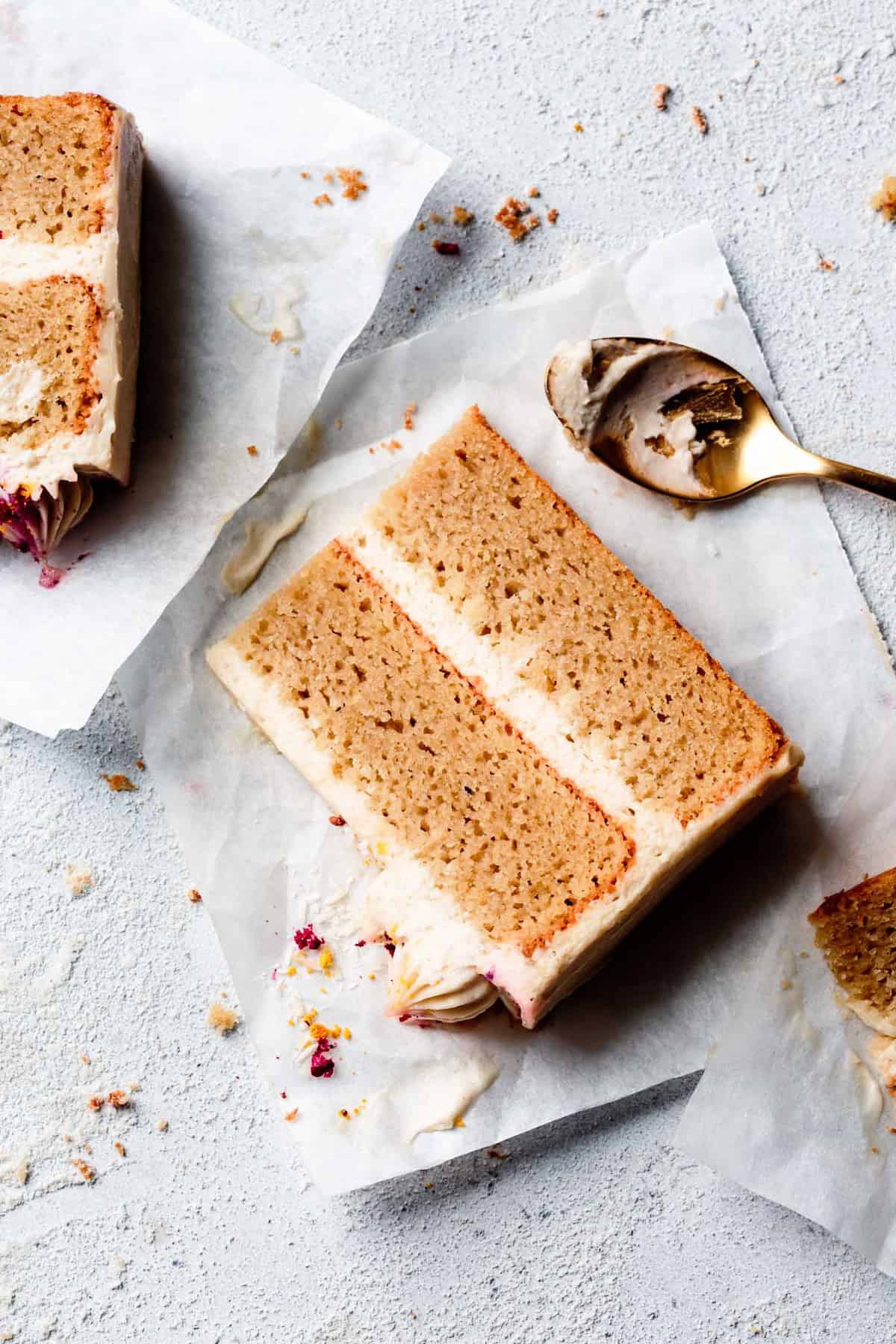
The Icing on the Cake: Favorite Toppings
Use any of these fluffy, spreadable, not-too-sweet frostings on top of and between your coconut flour cake layers. (Or licked off of spoons – I won't tell!)
- Paleo Cream Cheese Frosting: shown here! Silky-smooth, pipeable, and made with cashew butter, coconut yogurt, maple syrup, and coconut oil.
- Vegan Cream Cheese Frosting: Vegan cream cheese, butter, and powdered sugar make a vegan take on classic cream cheese frosting.
- Less-Sweet Cream Cheese Frosting: a lower-sugar take on the classic with lots of flavor options: chocolate, matcha, citrus, and more.
- Vegan Chocolate Ganache: a two-main-ingredient recipe for chocolate lovers.
- Whipped Coconut Cream: Spread billows of coconut whip on the cake layers. I love this option with fresh berries for a giant berry shortcake of sorts.
Coconut Flour Cake for Everyone
This simple vanilla coconut flour cake has the tender crumb and vanilla flavor of a classic birthday cake, but it's free of many common allergens for everyone to enjoy.
However you serve it up, I hope you love it as much as we do!
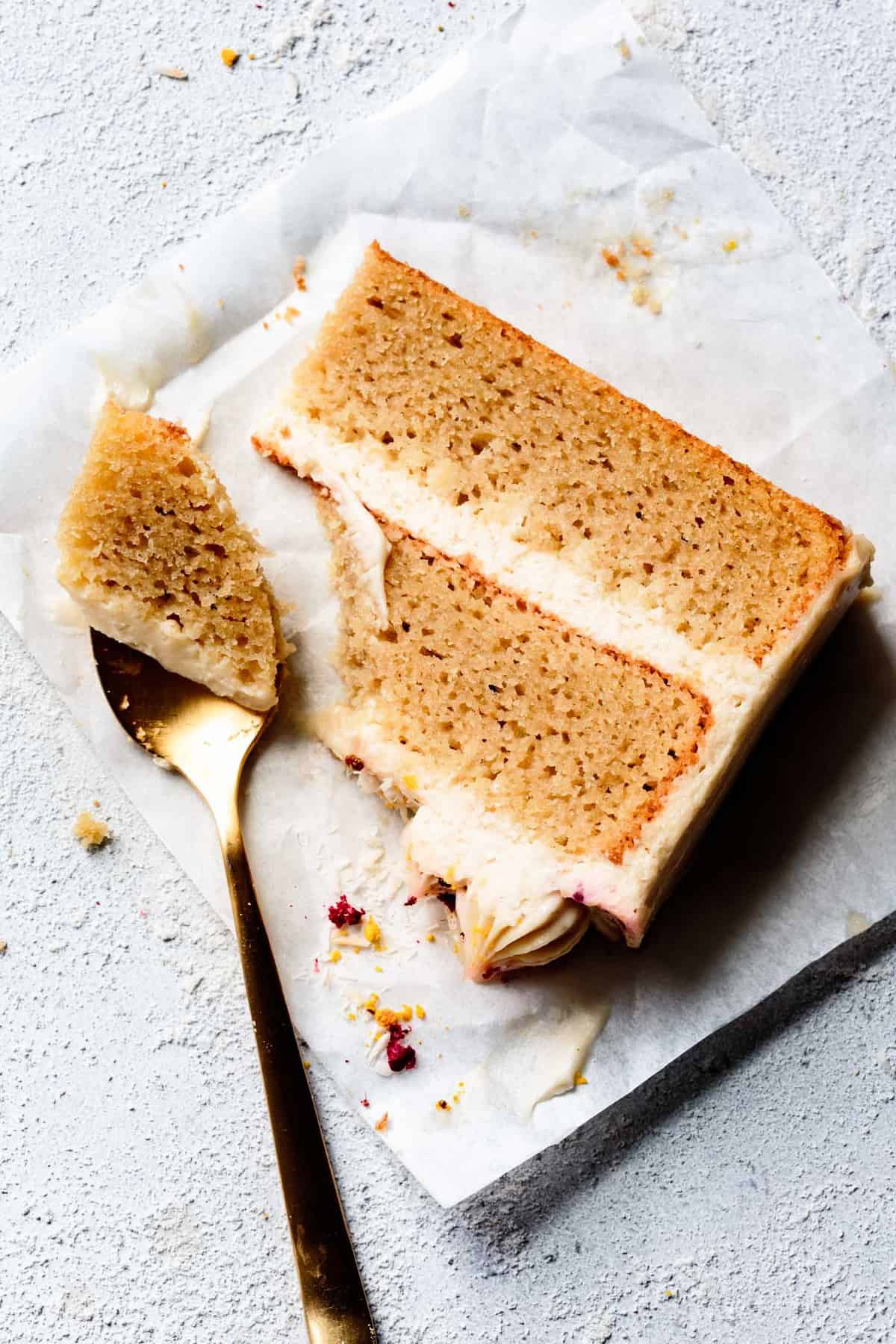
*Bojon appétit! For more Bojon Gourmet in your life, follow along on Instagram, Facebook, or Pinterest, purchase my gluten-free cookbook Alternative Baker, or subscribe to receive new posts via email. And if you make this gluten-free coconut flour cake recipe, I’d love to know. Leave a comment and rating below, and tag your Instagram snaps @The_Bojon_Gourmet and #bojongourmet.*
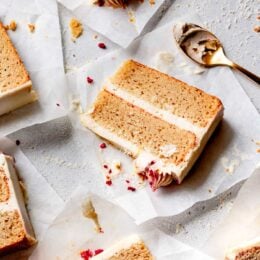
Pillowy Coconut Flour Vanilla Layer Cake
Print Recipe Pin RecipeIngredients
- 2 batches paleo cream cheese frosting, chilled until firm
- 1 teaspoon coconut oil for the pans
Wet Ingredients
- 4 large eggs
- 1 cup (210 g) neutral oil such as grapeseed, sunflower, avocado, or mild olive oil
- 1 ¼ cups (390 g) maple syrup (preferably light-colored grade A amber)
- 1 cup (230 g) well-combined full-fat coconut milk
- 1 tablespoon + 1 teaspoon GF vanilla extract
- 1 tablespoon strained lemon juice (or apple cider vinegar)
Dry Ingredients
- 1 cup (140 g) Bob's Red Mill cassava flour
- ¾ cup + 2 tablespoons (93 g) Bob's Red Mill coconut flour
- ¼ cup (30 g) Bob's Red Mill tapioca flour
- 1 tablespoon baking powder
- ½ teaspoon baking soda
- 1 teaspoon fine sea salt
For Decorating (optional)
- crushed freeze-dried raspberries, toasted shredded coconut, bee pollen
Instructions
- Make the frosting and chill until firm while you prepare the cake layers.
Make the Cake Layers
- Position a rack in the center of the oven and preheat to 350ºF. Rub the sides of two 8-inch round cake pans (with 2-inch high sides) with the coconut oil. Line the bottoms with rounds of parchment paper cut to fit.
- In a large bowl, combine the eggs and oil. Whisk until smooth and emulsified. Whisk in the maple syrup, then the coconut milk, vanilla, and lemon juice.
- Place a strainer over the bowl and sift in the cassava, coconut, and tapioca flours with the baking powder, baking soda, and salt into a medium bowl. Whisk until very smooth. If there are some lumps in the batter, let it sit for a minute or two, then whisk again. The batter will start out very thin, but it will thicken up as the flours begin to absorb moisture.
- Pour even layers into the prepared pans (about 675 grams each by weight) and smooth the tops.
- Bake the cake layers until the tops are golden and puffed with some cracks, the edges pull away from the sides of the pans, and a toothpick inserted near the center comes out with moist crumbs, 25-35 minutes.
- Place the cakes on a wire rack and let cool completely. Once cool, wrap tightly and chill until firm; this will make them easier to handle and frost.
Assemble the Layer Cake
- Once the cakes are chilled, loosen the edges of the cakes from the pans using a small, offset spatula. Turn the cakes out onto plates and peel away the parchment, then place right side-up on plates or cutting boards. If the cakes are domed on top, level them with a large, serrated knife.
- To frost, place one cake layer on a serving plate or cake stand. Spread a healthy layer of frosting over the top, making it as even as possible. Place the second cake layer over the frosting and smush it down slightly.
- Now spread a healthy layer of frosting over the top of the cake. If frosting the sides, pull the frosting down the sides to cover. Smooth with an offset spatula. This is your crumb coat. Chill or freeze the cake until the frosting is firm, and repeat frosting the top and sides to make a thicker layer. You can repeat this once more for a third layer if you like. Smooth the top of the cake.
- Pipe frosting around the edges using large and medium star tips. Sprinkle with crushed freeze-dried berries, toasted coconut, and/or bee pollen. Or go classic with sprinkles.
- Chill the cake until ready to serve. If you’re waiting more than a few hours, place the cake in a box to keep the frosting from drying out.
Cut & Serve
- Use a large, sharp chef's knife to cut the cake into wedges.
- The frosting will stay firm at cool room temperature for an hour or two, but it does melt easily if placed in direct sun or if the room is warm. Ideally, chill until ready to serve, then slice and let slices come up to room temperature before serving. This will ensure gooey frosting and soft, pillowy cake.
- The cake is best within 1-2 days of baking, but leftovers will keep, refrigerated airtight, for up to 3 days. Or freeze leftovers for up to 1 month. Bring to room temperature before enjoying.


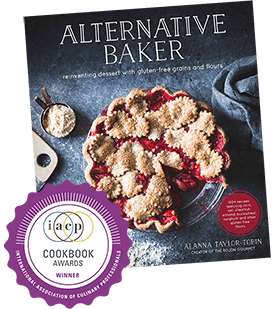

Emma says
My first experience with cassava flour, and I’m NOT mad about it! The texture of this cake is to die for. I just ate the final piece, and even four days later and time in the fridge, it stayed perfectly moist and fluffy! I think I’ve found my new favorite cake for sure.
Alanna Taylor-Tobin says
Thank you so much for trying my recipe Emma - I'm so glad it was a hit!
Geege says
I get a tummy ache from cassava anything. Please tell me there is a substitute for it in this recipe. I so want to make it!
Alanna Taylor-Tobin says
Oh no, that's no good! What kind of flours can you have?
Martina says
I made the coconut cake with gluten free cake flour and coconut flour. I only had soy milk in the fridge, so I added this instead of coconut milk. The cake came out perfect. topped with strawberries etc. Wonderful recipe. Thank you!
Alanna Taylor-Tobin says
I'm so glad the cake worked well with those substitutions. Thanks very much for sharing, this will be helpful to other readers I'm sure!
@warm_brie says
I can’t wait to try this! All of your cake recipes I’ve used have come out perfectly. Other than using light maple syrup, any suggestions for making this a funfetti cake including sprinkles in the batter?
Thank you :)
Alanna Taylor-Tobin says
Oh what a fun idea! I *think* you should be able to stir sprinkles into the batter and not make any other changes. Please let me know how it goes!
Tanya says
I have made this cake countless times and everyone is always amazed its its gluten free! So stinking good!!
Alanna Taylor-Tobin says
Aw this makes me so happy! Thanks so much for trying my recipe and for the sweet note!
Tali says
Hello,
Instead of using Maple syrup could I do a simple syrup with white sugar?
What would the ratio be?
Alanna Taylor-Tobin says
Hi Tali,
Great question! I think this could be made to work. That said, I tested the recipe a zillion times to get it to work with maple syrup. In an ideal world, you would make the original recipe as written so you know what consistency the batter and cake should be, then you could start experimenting with using simple syrup instead.
You would want to use the same weight of simple syrup as maple syrup. I did an internet search and found this: "Simple syrup is made by boiling together 1 cup of water with 1 cup of your sugar of choice. You can thicken this up with a little corn or tapioca starch for a more syrup-like texture. Simple syrup can be used in place of maple syrup in a 1 to 1 ratio in your baking." I'm not sure how accurate this information is; my gut sense is that you'd need more sugar than water, but it may take some experimentation.
Please let me know what you try!
-A
Madhumitha Venkataraman says
Can the tapioca/arrow root flour in this recipe be replaced with corn flour or rice flour?
Alanna Taylor-Tobin says
Hm, good question. The best sub for tapioca flour is arrowroot starch. Corn starch might work but the texture might be different. You could also try using 30 more grams of cassava flour, but there's more fiber in cassava flour so the texture might be less springy. Please let me know what you try!
Carson says
Made this cake + your coconut milk chocolate ganache for a friend’s birthday this weekend, and it was delish! It was so moist, it gave me pound cake vibes! Loved the flavor
Alanna Taylor-Tobin says
Hi Carson,
A belated thank you for the super sweet note - I'm so glad you loved this cake! I bet it tasted decadent with that ganache - yum!!
xo,
A
Cindy says
I used this recipe to make cupcakes for my son’s birthday and they were out-of-this-world amazing! Pillowy is the perfect description of the cake’s texture. The recipe made 19 good-sized cupcakes. I frosted them with your less sweet cream cheese icing and then dipped them in toasted coconut. Perfect! TThe cupcakes were a huge hit and are truly special. I’m already planning to make them again with the leftover ingredients. Thank you, Alanna, for taking the guesswork out of making gluten-free baked goods. I trust any recipe you create and am grateful to have you as a resource!
Alanna Taylor-Tobin says
Awwww I'm so glad you loved this cake recipe and that it worked well as cupcakes. I bet they looked adorable dipped in toasted coconut. Also, yum!! Thanks ao much for trying my recipe and for the super sweet note!
xo,
A
Amenda says
I'm wondering about making this cake for some friends who need to eat AIP. Do you have a suggestion for substituting for the eggs? Maybe gelatin?
Alanna Taylor-Tobin says
Hi Amenda,
This is such a great question! I've never tried using gelatin egg, but from what I'm reading online it seems like it should work! Here's a very detailed article on using gelatin as an egg replacement.
Other AIP-friendly options to try would be mashed banana and/or apple sauce, but I think gelatin sounds like the best bet here for its neutral flavor and protein content.
Please come back and let me know if you try it as I know this will help other readers as well!
-Alanna
Amenda says
Thanks so much for your quick and helpful reply. It's not going as well as I would have liked...yet ;) The gelatin method suggested in the article you provided made a very greasy, flat cake with a chewy texture -- the heat from the hot gelatin would be the culprit. Next, a cool gelatin method went slightly better, and a cool gelatin + banana has worked the best, although still very sub-ideal. But, that's kind of what happens when you take all the normal ingredients out of cake :) I will say, the batter each time before I bake it has been LOVELY, so your recipe seems spot on! (just not my tweaking it, arg)
Alanna Taylor-Tobin says
Yikes, I'm so sorry that the gelatin egg hasn't been an easy fix. That first one does not sound delicious lol! I'm glad the cool gelatin method + banana is more promising at least. Is the cake turning out dense and not fluffy?
I've heard that some egg-free cake recipes add vinegar (I'm guessing this it to help activate the leavening) - curious if adding a little ACV could help, maybe a teaspoon or so to start with?
Please let me know if you experiment some more!
Nikki says
Absolutely delicious! The cake is perfection. So moist and fluffy!
Alanna Taylor-Tobin says
Yaaayyyy I'm so glad it was a hit!
Mandy L Pena says
How much "real" cream cheese do I use in place of the paleo cream cheese.
Alanna Taylor-Tobin says
You can make a double batch of my classic (less sweet) cream cheese frosting to frost this cake in lieu of the paleo frosting. Let me know how it goes!
Vanessa says
This cake would be perfect if altered for banana bread and other quick breads. The texture is more fibrous and earthy than the kind of cake you want for later cake, and you can absolutely tell right away that is some kind of "whole grain" or in this case whole plant cake. I will definitely make some alterations as I have a bag of cassave flour and coconut flour to get through, but I would only buy cassave flour again to make gluten free tortillas if there isn't a better and cheaper option.
On a side note, I follow a gluten-free cornbread recipe that uses oat flour, but it might be better with the cassava.
Alanna Taylor-Tobin says
Hi Vanessa,
Thanks for the feedback! I find this cake to be pretty fluffy and tender, but I know that if there's too much coconut flour, it can quickly become dense and heavy since that flour is super absorbent. I would recommend taking down the coconut flour by a tablespoon or two to see if you can get a lighter cake. The maple will add an earthy flavor if you use a darker syrup, so be sure to use a light syrup for the most neutral flavor.
I do have a recipe for coconut flour banana cake in case you'd like to try that. And Snixy Kitchen has a great recipe for cassava flour tortillas if you're looking for a good one.
Happy baking!
-Alanna
Ed says
Happy birthday to Jay, congratulations~!
Alanna Taylor-Tobin says
Aw thank you, I will let him know!
jennifer says
Hi Alanna,
This recipe looks absolutely delicious, just curious if you think it would work well with added almond extract for an almond flavored cake?
Alanna Taylor-Tobin says
Hi Jennifer,
Yes I think almond extract would be delicious here! It can be fairly strong, so I might start with 1/4 or 1/2 teaspoon and go up from there. Please let me know how it turns out! :)
-Alanna
Summer says
Hi Alanna,
My kids have been asking for a pineapple upside-down cake. I'm paleo, do think this would work for that? Also, would coconut sugar be your choice for the caramel on the bottom?
Curious to hear your thoughts.
~Summer
Alanna Taylor-Tobin says
Hi Summer,
I love the thought of using this coconut cake for a pineapple upside-down cake, yum! I think it should work well for that purpose; the only caveat being that you might need to decrease the liquid in the cake to compensate for extra liquid in the fruit. I would try it as written first though, because if the cake is too dry, it will bake up really dense.
I have a pineapple upside-down cake recipe in the archives, adapted from Cook's Illustrated, that makes a delicious topping, and it would work well with coconut sugar (I originally used an unrefined sugar similar to coconut sugar that isn't made anymore).
Please let me know if you try it! I'd love to see pictures if you feel like sharing via Instagram or email too!
xo,
A
Rachel says
This cake texture is amazing!! A bit sweeter than I usually cook and pricey with all that maple syrup, but no one would believe it isn't a "normal" cake.
Alanna Taylor-Tobin says
Oh I'm so glad you liked the cake! You can absolutely take down the sweetness if you prefer; just swap in some water or coconut milk for some of the maple syrup. Let me know if you experiment!